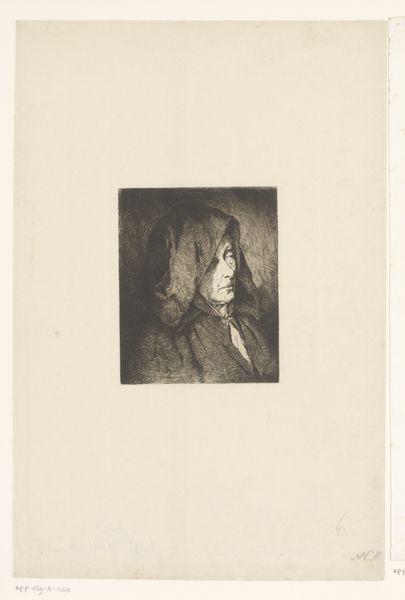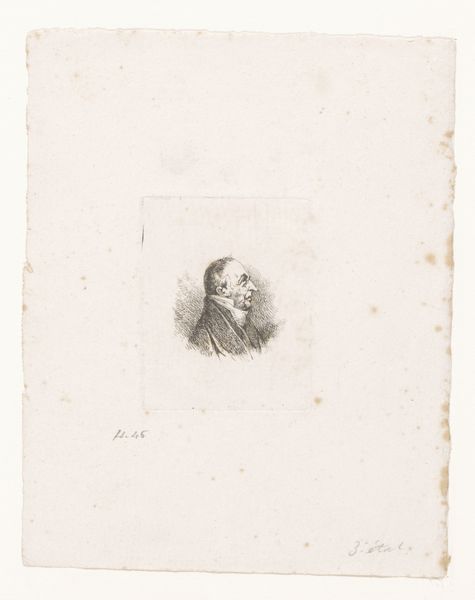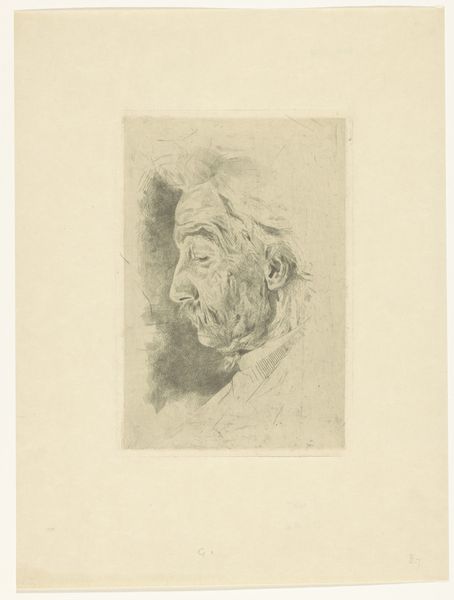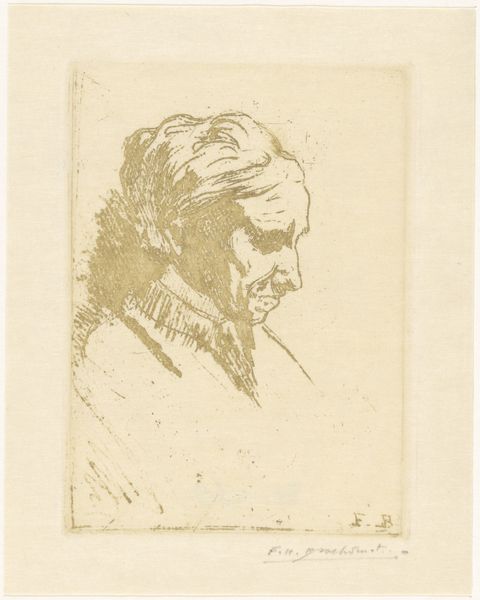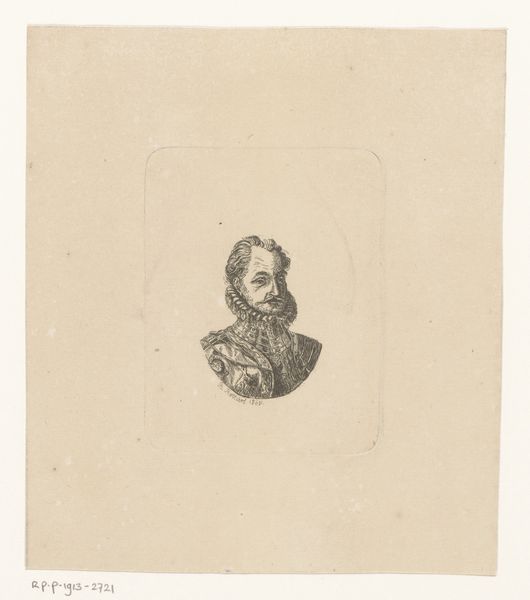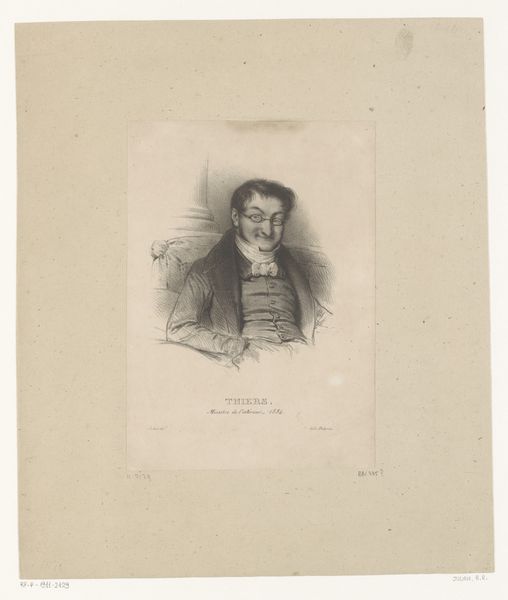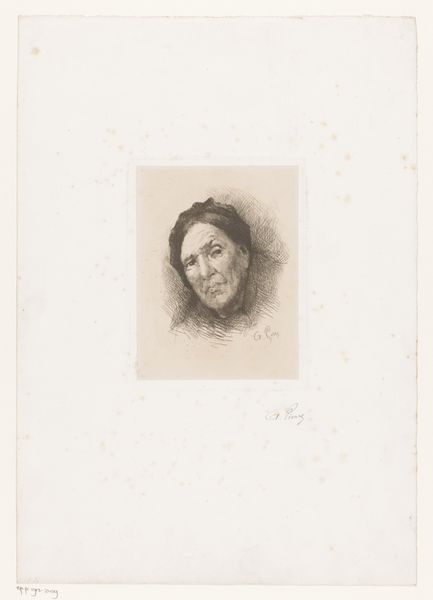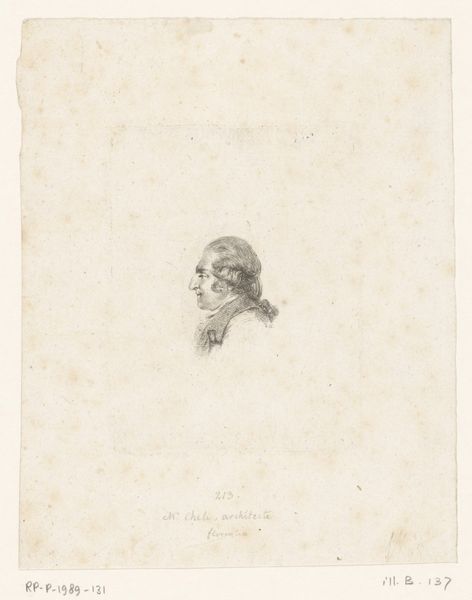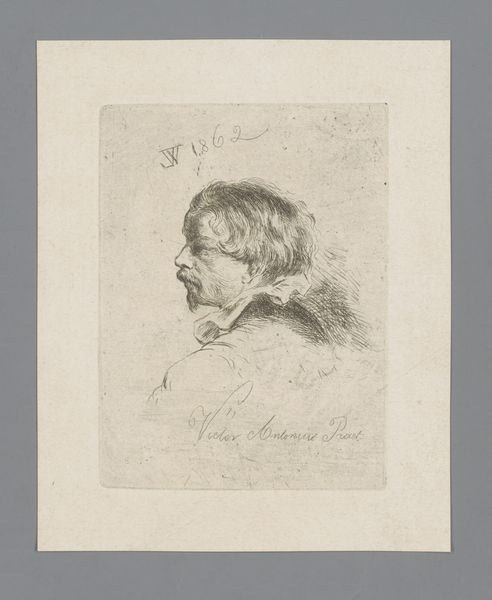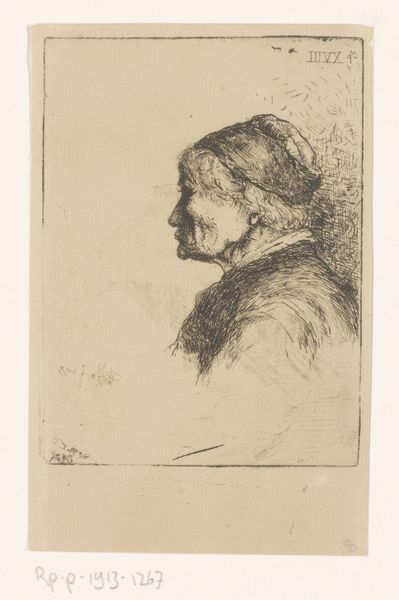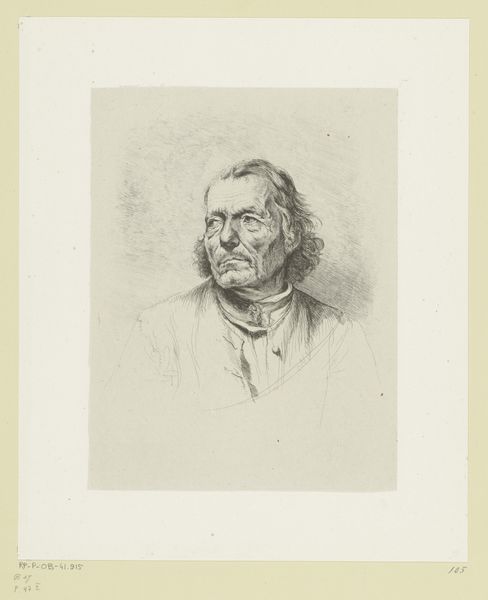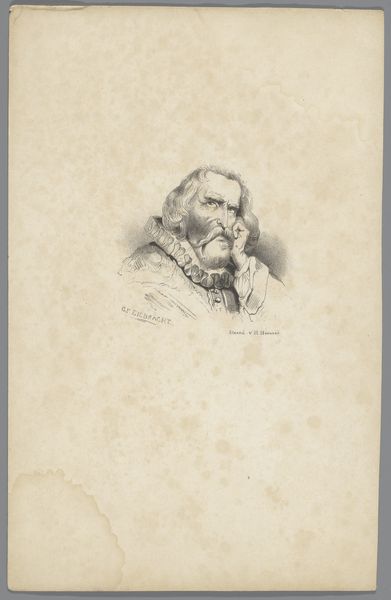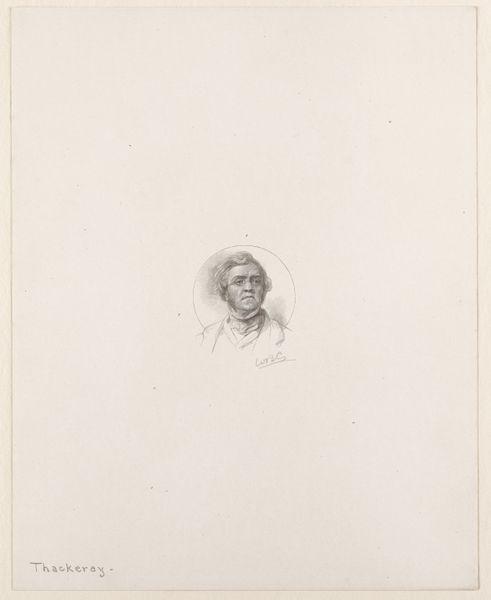
Dimensions: height 177 mm, width 138 mm
Copyright: Rijks Museum: Open Domain
Editor: This is a portrait of Anton Rubinstein, dating from sometime between 1880 and 1911, by Willem Lamorinière, done in pencil. The intensity of the subject's gaze is immediately striking. How do you interpret that expression and the overall composition? Curator: The direct gaze indeed holds immense significance. Rubinstein was a monumental figure, a pianist rivaling Liszt. The piercing eyes could symbolize both genius and the burden of that talent. The somewhat sketchy rendering enhances this—it’s a raw, unfiltered portrayal. The pencil lines, quick and decisive, don't just depict his likeness; they hint at his fiery spirit and intellectual rigor. Does the gaze remind you of any historical figures in earlier portraiture? Editor: It’s reminiscent of how philosophers and other great thinkers were often portrayed during the Enlightenment. The artist seems to be suggesting that Rubinstein occupies a similar space, perhaps? Curator: Precisely. The portrait serves as a cultural marker, placing Rubinstein within a lineage of intellectual and artistic giants. The use of pencil itself contributes to this symbolism. Pencil, often used for preparatory sketches, can convey immediacy, hinting at the creative process, as though we are witnessing the birth of a musical idea. It almost feels like an icon. Editor: An icon... That makes a lot of sense! Curator: It's designed to memorialize a man and his cultural contributions; a memory made tangible. Editor: I didn’t think about it that way before, seeing the work more as a historical document than a crafted, deliberate representation. Thanks for expanding my view. Curator: My pleasure. Always look closely at the marks. They always have something to say.
Comments
No comments
Be the first to comment and join the conversation on the ultimate creative platform.
